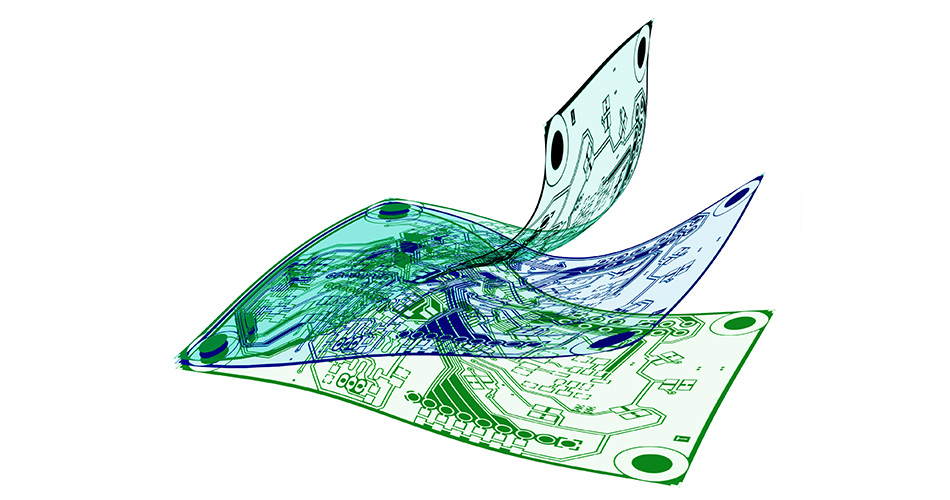- English
- Español
- Português
- русский
- Français
- 日本語
- Deutsch
- tiếng Việt
- Italiano
- Nederlands
- ภาษาไทย
- Polski
- 한국어
- Svenska
- magyar
- Malay
- বাংলা ভাষার
- Dansk
- Suomi
- हिन्दी
- Pilipino
- Türkçe
- Gaeilge
- العربية
- Indonesia
- Norsk
- تمل
- český
- ελληνικά
- український
- Javanese
- فارسی
- தமிழ்
- తెలుగు
- नेपाली
- Burmese
- български
- ລາວ
- Latine
- Қазақша
- Euskal
- Azərbaycan
- Slovenský jazyk
- Македонски
- Lietuvos
- Eesti Keel
- Română
- Slovenski
- मराठी
- Srpski језик
Flexible circuit board in PCBA processing
2024-07-27
Flexible Printed Circuit Board (Flexible PCB for short) is a circuit board with bending properties and plays an important role in PCBA processing. This article will discuss the flexible circuit board in PCBA processing, including its characteristics, application scenarios, processing technology and advantages.

1. Flexible circuit boards have the following salient features:
Bending performance: Compared with rigid circuit boards, flexible circuit boards have better bending performance and can be bent and folded. They are suitable for scenarios where space is limited or bending installation is required.
Light weight and small size: Due to the use of flexible substrates, flexible circuit boards have the characteristics of light weight and small size, which can meet the design requirements of lightweight and compactness.
High reliability: The flexible circuit board adopts special base materials and processes, has high reliability and durability, and is suitable for high-demand industrial and military fields.
2. Flexible circuit boards have a wide range of application scenarios in PCBA processing:
Mobile devices: Internal connection circuit boards in mobile devices such as mobile phones and tablets often use flexible circuit boards due to limited space.
Medical equipment: Circuit boards in medical equipment that require curved installation or compact design, such as pacemakers, medical monitors, etc.
Automotive electronics: Internal connection circuit boards in automotive electronic products. Due to the limited space in the car and the need for seismic resistance, flexible circuit boards are often used.
3. Processing technology of flexible circuit boards
Substrate selection: Choose flexible substrates, such as polyimide (PI) substrates, polyamide (FPC) substrates, etc., which have good high temperature resistance and tensile resistance.
Graphic design: Carry out line graphic design and circuit connection design according to product design requirements.
Printing process: Flexible PCB printing process is used to print circuit graphics on flexible substrates.
Metallization treatment: Metallization treatment is performed on the printed circuit pattern to form a conductive layer.
Assembly and packaging: Assemble and package the flexible circuit board and components to form a complete PCBA product.
4. Flexible circuit boards have the following advantages in PCBA processing:
High space utilization: Because flexible circuit boards can be bent and folded, they can better utilize space and adapt to complex installation environments.
High reliability: The flexible circuit board adopts special materials and processes, has high reliability and stability, and can meet the high requirements of industrial and military fields.
Cost saving: Flexible circuit boards are lighter and thinner than rigid circuit boards, which can save materials and costs, and are suitable for mass production and products with high cost performance requirements.
Conclusion
As an important component in PCBA processing, flexible circuit boards have excellent bending properties and application advantages, and have broad application prospects in mobile equipment, medical equipment, automotive electronics and other fields. When processing flexible circuit boards, it is necessary to select appropriate base materials and processes based on product design requirements and processing processes to ensure product quality and stability. With the continuous advancement of technology and the increase in market demand, it is believed that the application of flexible circuit boards in PCBA processing will become more and more extensive, injecting new vitality and power into the development of the electronics industry.
-
Delivery Service






-
Payment Options









